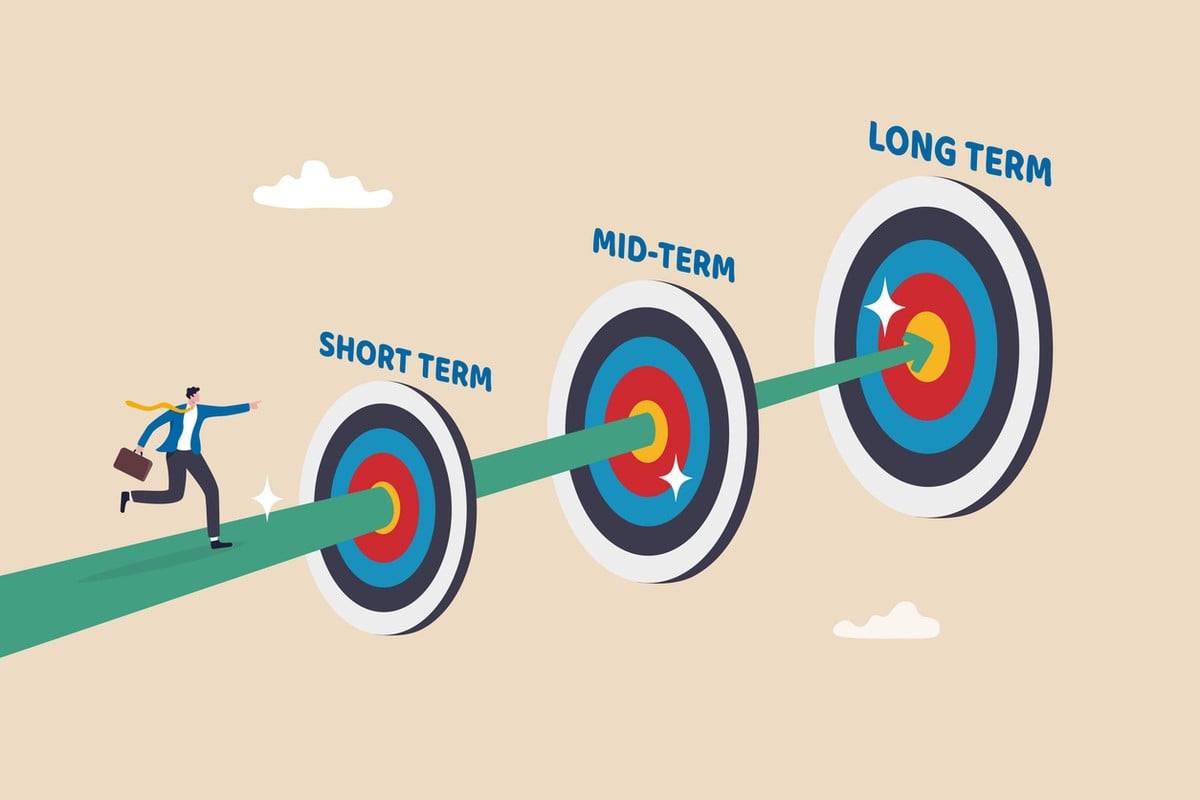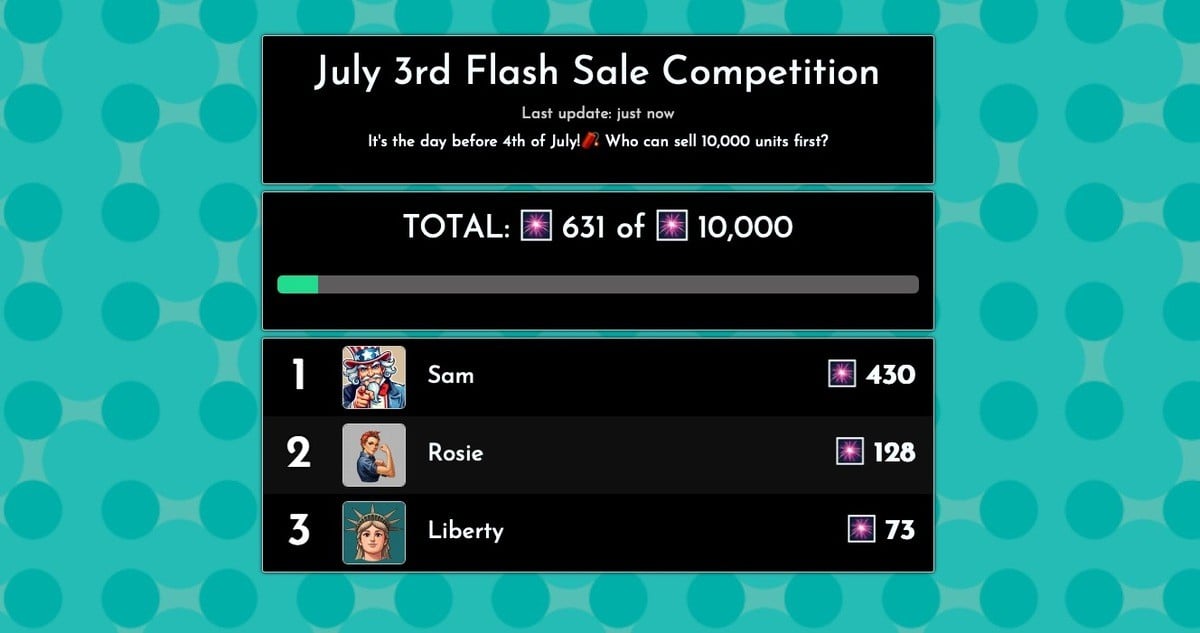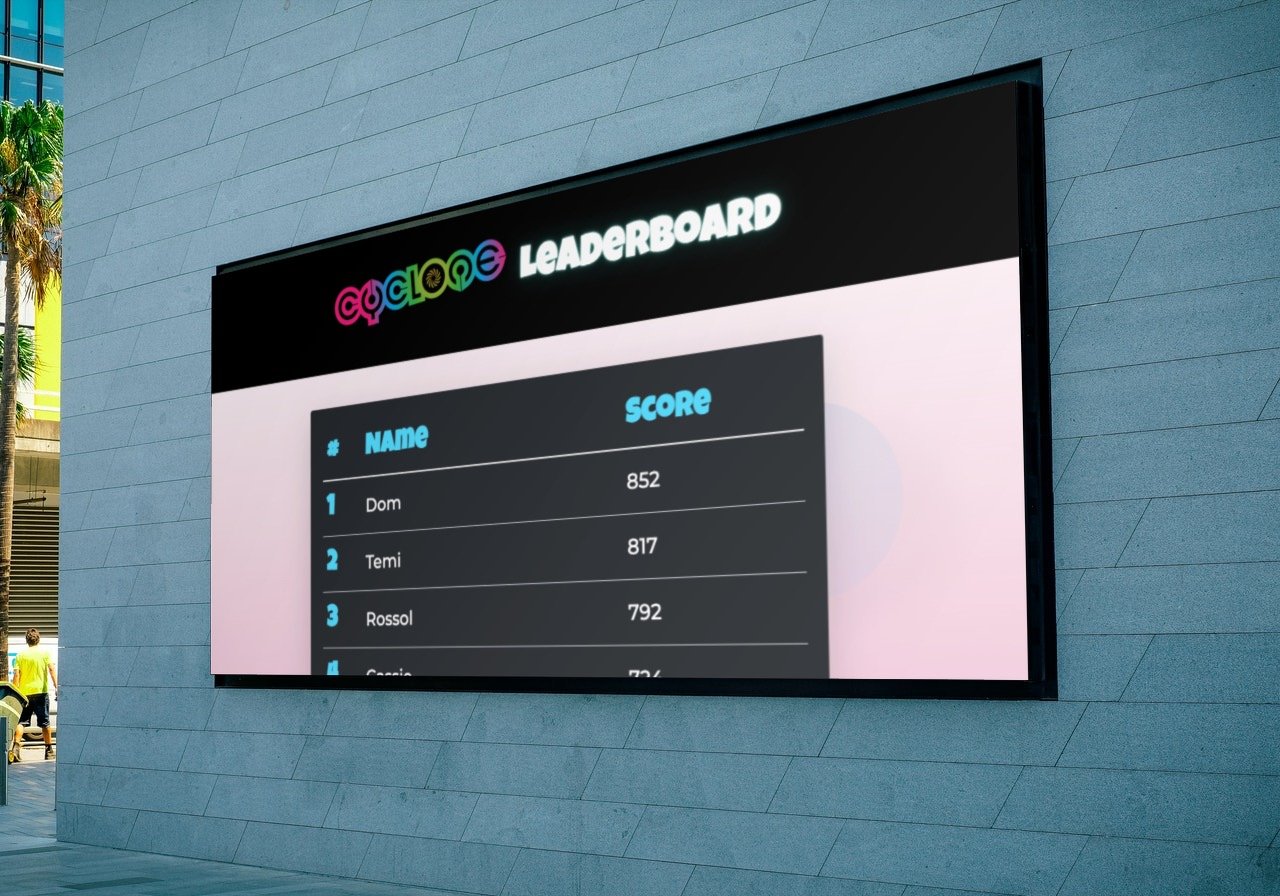In a classic episode of The Office, Andy devises a point reward system to incentivize his sales team. What starts out as a great idea quickly descends into chaos with arbitrary rewards and unsustainable prizes.
The structure and timeframe of your sales competition can make the difference between motivational success and failure. While specific contest ideas matter, choosing the right format for your industry, team, and goals is equally critical.
In this guide, we'll explore five proven sales competition formats based on timeframe and team structure, helping you select the approach that will drive the best results for your situation.
 Choosing the right sales competition format begins with understanding your strategic goals
Choosing the right sales competition format begins with understanding your strategic goals
Weekly Competitions: Driving Fast-Paced Results
Best for: B2C sales, inside sales teams, high-volume products/services, teams needing motivation boosts
Weekly competitions excel at creating immediate momentum and enthusiasm. They work best when you need quick results and can measure meaningful progress in short timeframes.
Key Elements of Effective Weekly Competitions
-
Short-term, actionable metrics: Focus on activities that can be completed within days:
- Number of calls/emails sent
- Meetings/demos scheduled
- Lead qualification rate
- First-call resolutions
- Daily conversion metrics
-
Frequent, smaller rewards: Weekly competitions thrive on immediate gratification:
- Gift cards ($25-100)
- Extended lunch breaks
- Choice of assignments
- Public recognition
- Small trophies or badges
-
Real-time visibility: Update standings daily or even hourly:
- Digital leaderboards displayed in common areas
- Morning kickoff meetings to announce standings
- End-of-day celebrations for winners
 Short-term goals require fast-paced competitions to keep everyone motivated and on target.
Short-term goals require fast-paced competitions to keep everyone motivated and on target.
Industry Examples
Retail: Weekly competitions tracking upsells or add-on items work well in retail environments where transaction volume is high and sales cycles are short.
SaaS with freemium models: Track free-to-paid conversions or feature upgrades on a weekly basis to maintain steady growth.
Inside sales teams: Use weekly competitions to boost call volume and initial meetings when prospecting is a key activity.
Implementation tip: For maximum impact, align weekly competitions with specific challenges your team is facing. If your pipeline needs more prospects, focus on new meetings; if you need to close more deals, focus on conversion activities.
Monthly Challenges: Encouraging Continuous Growth
Best for: B2B sales, complex products, longer sales cycles, balanced performance metrics
Monthly sales competitions provide the perfect middle ground between immediate results and sustainable progress. They give salespeople enough time to work through more complex sales activities while maintaining consistent motivation.
Key Elements of Effective Monthly Challenges
-
Progressive milestones and tiered rewards: Create a stepped approach that rewards progress throughout the month:
- Tier 1: 25% of goal = small prize
- Tier 2: 50% of goal = medium prize
- Tier 3: 75% of goal = larger prize
- Tier 4: 100%+ of goal = premium prize
-
Balanced metrics: Combine activity and outcome measures:
- Opportunities advanced to next stage
- Revenue generated
- Profit margin maintained
- New accounts opened
- Expansion in existing accounts
-
Regular check-ins: Maintain momentum with weekly progress updates:
- Monday kickoff meetings
- Thursday progress reviews
- End-of-month celebrations
Industry Examples
Enterprise SaaS: Monthly competitions work well for tracking progress in complex B2B sales where deals take weeks but not quarters to close.
Professional services: Track new client acquisition or project scoping on a monthly basis.
Manufacturing representatives: Monthly competitions align well with ordering cycles in many manufacturing contexts.
Implementation tip: The most effective monthly challenges include both team and individual components, keeping everyone engaged regardless of their current performance level.

Individual vs. Team Competitions: Balancing Personal and Collective Achievement
Best for: Mixed-skill teams, collaborative selling environments, organizations wanting to boost team cohesion
The structure of your competition -— individual, team-based, or hybrid -— significantly impacts its effectiveness. Each approach motivates different behaviors and works best in specific circumstances.
Key Formats to Consider
-
Individual leaderboards with team aggregation: Each salesperson competes individually, but their points also contribute to a team total:
- Motivates personal achievement
- Creates team accountability
- Prevents stronger performers from carrying weaker ones
- Reveals both individual and team contributions
-
Team competitions with individual recognition: Teams compete against each other, but standout individual performances are still highlighted:
- Fosters collaboration and knowledge sharing
- Encourages stronger team members to help weaker ones
- Creates natural mentoring opportunities
- Develops leadership skills
-
Paired competitions: Partner experienced with newer salespeople:
- Accelerates onboarding and skill transfer
- Creates accountability partnerships
- Breaks down silos between veterans and newcomers
- Spreads best practices throughout the organization
Industry Examples
Complex B2B sales: Team competitions work well when multiple people touch each deal and collaboration is essential.
Field sales organizations: Mixed individual/team approaches can balance healthy competition with necessary teamwork in the field.
Companies integrating new hires: Paired competitions help integrate new salespeople while maintaining productivity.
 Team competitions build cohesion while driving individual contributions
Team competitions build cohesion while driving individual contributions
Implementation tip: When designing team competitions, carefully balance team sizes and skills. Uneven teams quickly lead to disengagement from those who feel disadvantaged.
B2C Sales Competitions: Maximizing High-Volume Opportunities
Best for: Retail, direct-to-consumer, ecommerce, high-transaction businesses
B2C sales environments typically involve higher transaction volumes, shorter decision cycles, and more predictable buying patterns. These characteristics demand specialized competition formats.
Effective B2C Competition Structures
-
Power hours: Short, high-intensity contests during peak selling periods:
- 1-2 hour timeframes
- Focus on transaction volume or value
- Immediate rewards at completion
- Often scheduled during traditionally slower periods to boost productivity
-
Flash contests: Surprise competitions announced with little notice:
- 24-48 hour duration
- Single, clear objective
- Announced at strategic moments (beginning of month, after slow periods)
- Creates excitement and breaks routine
-
Upsell challenges: Competitions focused on increasing average transaction value:
- Track attachment rates for complementary products
- Measure average order value increases
- Reward percentage improvements rather than just absolute numbers
- Can run in parallel with volume-based competitions
Industry Examples
Retail: Flash contests work particularly well during slow periods or to highlight specific product promotions.
Call centers: Power hour competitions can dramatically improve productivity during specific time windows.
Ecommerce: Upsell challenges align well with digital selling where product recommendations are automated but require sales input.
Implementation tip: In B2C environments, keep competition mechanics extremely simple. With high transaction volumes, complicated scoring systems become burdensome and confusing.
Seasonal and Quarterly Campaigns: Aligning with Business Rhythms
Best for: Businesses with seasonal fluctuations, strategic initiatives, complex B2B sales cycles
For many businesses, sales rhythms follow predictable seasonal or quarterly patterns. Effective competition formats for these environments align with these natural business cycles.

Effective Long-Term Competition Structures
-
Quarterly themes with monthly milestones: Align competitions with quarterly business objectives:
- Q1: New customer acquisition
- Q2: Product expansion in existing accounts
- Q3: Retention and renewal focus
- Q4: End-of-year closing push
-
Seasonal specialization: Create competitions that match seasonal business patterns:
- Holiday season preparation (retail)
- Back-to-school campaigns (education)
- Annual budget flush (government/enterprise)
- Tax season (financial services)
-
Long-term points accumulation: Create year-long campaigns with quarterly winners and annual grand prizes:
- Points earned throughout the year
- Quarterly recognition and rewards
- Annual "championship" recognition
- Prevents disengagement after slower periods
Industry Examples
Financial services: Quarterly competitions align well with regulatory reporting periods and natural client review cycles.
Construction/real estate: Seasonal competitions match weather-dependent business fluctuations.
Enterprise technology: Quarterly competitions match budget cycles and decision processes in large organizations.
Implementation tip: For longer competitions, create "comeback mechanics" that allow people who fall behind early to remain engaged. This might include double-point periods or special challenges worth extra points.
Choosing the Right Format: Decision Framework
Selecting the optimal competition format depends on several key factors:
Sales Cycle Length
- Under 7 days: Weekly competitions
- 1-4 weeks: Monthly challenges
- 1+ months: Quarterly campaigns
Team Composition
- Diverse experience levels: Team or paired formats
- Similar experience levels: Individual competitions
- Collaborative selling: Team competitions
Business Seasonality
- Consistent year-round: Regular cadence of similar competitions
- Highly seasonal: Variable competition formats aligned with busy/slow periods
- Quarterly focus: Themed competitions matching quarterly objectives
Product Complexity
- Simple products/services: Activity-based competitions (calls, demos)
- Complex solutions: Progress-based competitions (advancing opportunities)
- Mixed portfolio: Tiered competitions with different metrics for different products
Implementing Your Competition with a Sales Leaderboard
Whatever format you choose, visual tracking enhances engagement and transparency. A digital sales leaderboard keeps your competition front-of-mind and creates natural conversation around progress.
 Digital leaderboards make competition progress visible and engaging
Digital leaderboards make competition progress visible and engaging
KeepTheScore.com offers flexible leaderboard options for any competition format:
- Create a leaderboard by clicking the button above
- Enter participant names and competition details
- Customize with your branding, colors, and theme
- Select the metric you're tracking (calls, revenue, etc.)
- Share with your team via link or display on office screens
For specific contest ideas to use with these competition formats, check out our guide to 8 effective sales contest ideas that boost team performance and drive results.
Beyond the Competition: Creating Lasting Impact
The most effective sales competitions don't just drive short-term results—they create lasting behavior changes and skill development. Whatever format you choose, incorporate these elements:
- Skills development: Include training components related to the focus area
- Process improvement: Use competitions to reinforce best practices
- Data collection: Track which competition formats drive the best results for future planning
- Follow-through: Plan post-competition activities to sustain momentum
By carefully matching your competition format to your business needs, team structure, and goals, you'll create meaningful contests that drive both immediate results and long-term success.
What competition format has worked best for your team? Share your experiences in the comments below!





